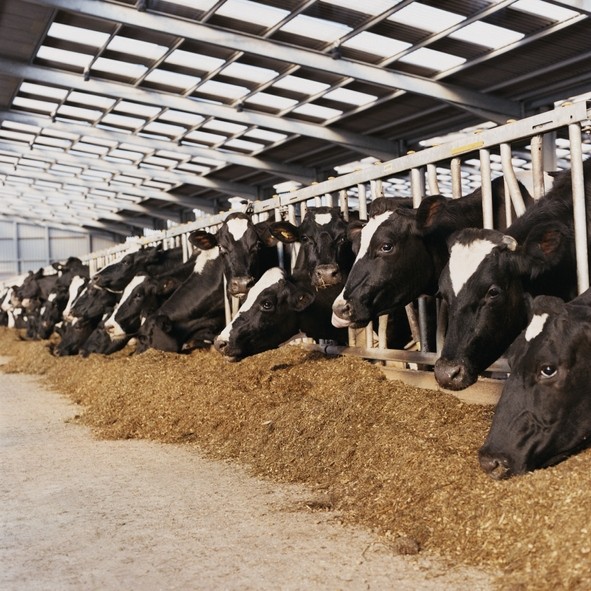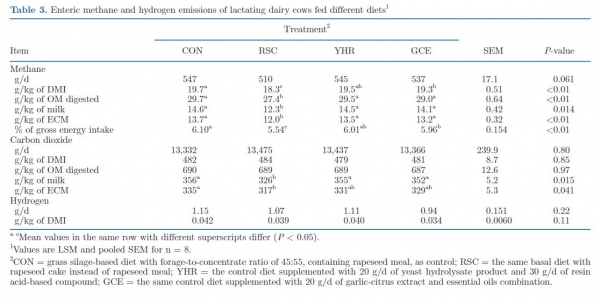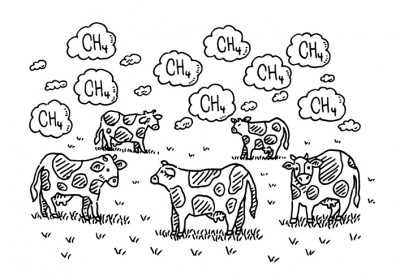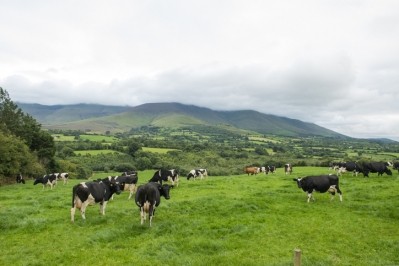Rapeseed cake offers promise as methane emissions busting tool in dairy cow production

Meeting the need to feed the constantly growing human population without deleterious impact on the environment is a global challenge, they said.
Ruminants are an important part of the food system because of their ability to convert feedstuffs unsuitable for human consumption into high-quality protein in milk and meat, said the researchers, writing in the Journal of Dairy Science.
"However, they also contribute to climate change, mainly by emitting methane (CH4), a potent greenhouse gas, as a product of rumen fermentation. Methane also represents an estimated loss of energy intake from dairy cows."
Although CH4 is a more potent greenhouse gas than CO2, it has a shorter lifetime than CO2, which makes it an attractive target for quicker global warming abatement, they added.
The team noted several nutritional and management strategies that have been reported to be effective in mitigation of greenhouse gas emissions from ruminants. ”Lipid supplementation is one of the most promising tools to depress CH4 production from ruminants. Dietary lipid supplements can also increase feed efficiency (NRC, 2001) and increase the proportion of nutritionally desirable milk fatty acids.”
Previous studies have demonstrated reduced methane emissions per kilogram of feed intake by supplementing rapeseed cake as a practical means of introducing lipids to dairy cow diets without adversely affecting feed intake or performance, they added.
The researchers decided to test the impact of feeding high-oil rapeseed cake or additives - consisting of garlic (Allium sativum), citrus extracts (Citrus aurantium) and essential oils, as well as a combination of yeast hydrolysate and a coniferous resin acid-based compound - as rumen modifiers on methane emissions, nutrient utilization, performance, and milk fatty acid (FA) profile of dairy cows.
“The main hypotheses were that the high-oil rapeseed cake diet or dietary natural additives would reduce enteric CH4 emissions per unit of milk by altering rumen fermentation pattern without impairing animal performance and nutrient utilization. In addition, we hypothesized that the high-oil rapeseed cake would improve milk fatty acid composition.”
The study was funded jointly by the Natural Resources Institute Finland, Arla Ltd, Hankkija Ltd, and Mootral.
The set-up
Eight multiparous Nordic Red dairy cows were randomly assigned to treatments, said the authors.
The cows received diets formulated to yield a 45:55 ratio of grass silage to concentrate, composed of:
- Control, containing 19.3% rapeseed meal on a DM basis (CON)
- CON with full replacement of rapeseed meal with rapeseed cake (RSC; 19.3% DM)
- CON supplemented with 20 g/d of yeast hydrolysate product plus 30 g/d of resin acid-based compound (YHR), and
- CON supplemented with 20 g/d of a combination of garlic-citrus extract and essential oils (GCE).
For the RSC diet, cold-pressed rapeseed cake, with high residual oil content, was supplied by Alavuden Öljynpuristamo Ltd.
The additive GCE, fed at 20 g/day, consisted of a blend of garlic powder with allicin content, extracts of citrus bioflavonoids and a mixture of essential oils, eugenol, and geranyl acetate (Mootral SA), in a pellet formulation. "The dosage was selected based on a previous in vivo trial (Vrancken et al., 2019), wherein a significant reduction in enteric CH4 emissions from dairy cows was observed at a similar dose."
For the YHR treatment, the yeast hydrolysate product and the resin acid-based compound were mixed with concentrate ingredients before preparing the pellet.
The raw material for the resin acid-based compound originates from northern coniferous trees, Scots pine and Norway spruce.
"The resin acid-based compound in our study contained 40% free FA, 9% resin acids in lipid soluble form, 1% unsaponifiable carrier, and 50% silicate carrier (Hankkija Oy). The free-flowing yeast hydrolysate product contained 66% Saccharomyces cerevisiae, 14.5% sodium phosphates, 16.5% extracts from barley and barley malts, and 3% anticaking agent sepiolite (Hankkija Oy)."
Apparent total-tract digestibility was measured during the study using total collection of feces, and CH4 emissions were measured in respiratory chambers on four consecutive days, reported the specialists.
The findings
Emissions of CH4 per day, per kilogram of DMI, and per kilogram of energy-corrected milk, and gross energy intake were lower for RSC compared with other diets, observed the team.
"The daily methane emission was reduced by 6.76% but as these cows ate more and produced more milk, when we correct for DMI and milk or ECM yields the responses were even stronger (between 7.11-15.75%)," Ali-Reza Bayat, senior research scientist, Natural Resources Institute Finland, and one of the paper's authors, told us.
The researchers found no effect of YHR on daily CH4 emissions, but they saw that CH4 yield (g of CH4/kg of DMI or as percentage of gross energy intake) decreased with GCE compared with the control.

None of the diets influenced energy balance, although the proportion of energy intake excreted as CH4 was lower with RSC and GCE compared with control, according to the findings.
Feeding RSC decreased saturated fatty acids (SFA) by 10% in milk fat:
“These changes are characteristic in dairy cows fed dietary plant oil supplements and especially oil supplements rich in cis-9 18:1, such as rapeseed oil and high-oleic sunflower oil. Moreover, RSC not only decreased SFA in general but also slightly changed the composition of milk SFA by reducing 12:0, 14:0, and 16:0 while increasing 18:0. This change is beneficial for human health, as milk and dairy products contribute largely to the fat and SFA contents in the human diet.”
Based on the results of their study, the researchers concluded that a cattle diet containing rapeseed cake has good potential to reduce enteric methane emissions and simultaneously improve milk production.
Bayat said the team looked to use the highest possible amount of rapeseed cake in the diet, in order to introduce more oil, but he said such an approach might not be optimum or practical under commercial conditions.











